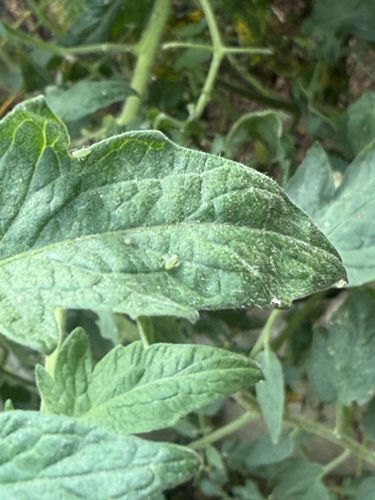Aphid
Scientific Name: Aphidoidea (Superfamily, as specific species cannot be determined from the image)
Order & Family: Hemiptera, Aphididae
Size: Typically 1-4 mm (0.04-0.16 inches) in length, varying by species.

Natural Habitat
Aphids are found on a wide variety of plants, both cultivated and wild, in gardens, agricultural fields, forests, and greenhouses. They are highly adaptable and can thrive in diverse climates where host plants are available.
Diet & Feeding
Aphids are sap-sucking insects. They feed on the phloem sap of plants by inserting their straw-like mouthparts (stylets) into plant tissues. This feeding can cause leaves to curl, yellow, or distort, and stunts plant growth.
Behavior Patterns
Aphids reproduce rapidly, often parthenogenetically (without mating), leading to quick population growth. They tend to cluster on new growth, stems, and the undersides of leaves. They excrete a sticky, sugary substance called honeydew, which can attract ants and promote the growth of sooty mold on plants.
Risks & Benefits
Risks: Aphids are significant agricultural and garden pests. They damage plants by feeding on sap, can transmit plant viruses as vectors, and their honeydew excretion leads to sooty mold growth which can inhibit photosynthesis. Benefits: While generally considered pests, some species serve as food for beneficial insects like ladybugs, lacewings, and hoverfly larvae, making them part of the food chain.
Identified on: 8/31/2025